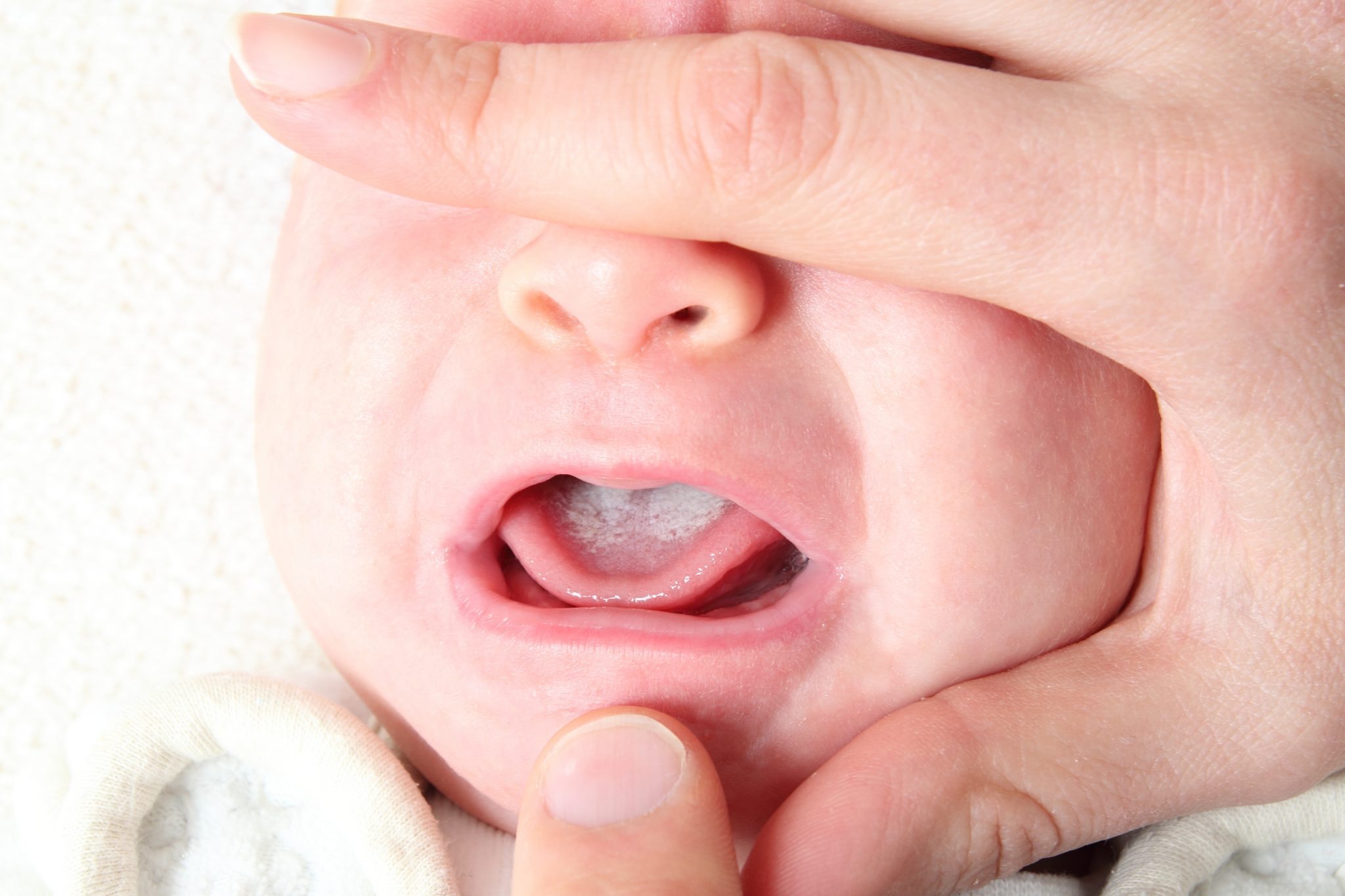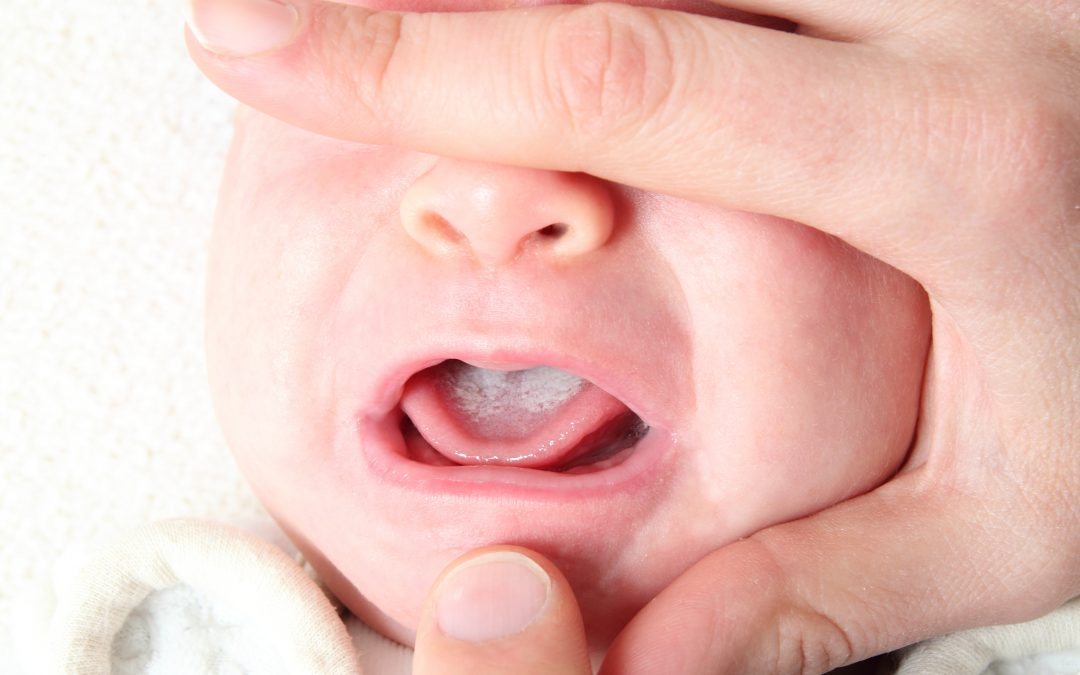
Breastfeeding may be slightly uncomfortable in the early days, but it should never be a painful experience. If you are experiencing pain that doesn’t go away with a correct latch, you could have thrush. Thrush is a common fungal infection that affects breastfeeding moms and infants.
What is Thrush?
The same fungus that is responsible for those dreaded vaginal yeast infections (candida) is the same fungus that is responsible for thrush. This yeast is a normal part of your and your baby’s digestive system. Under certain conditions, this yeast can overgrow, causing thrush to occur.
Though the symptoms of thrush are painful, it is a harmless condition that can be taken care of with the right treatment. Because thrush can affect both you and your little one, it’s important that you both receive treatment to prevent it from being spread back-and-forth during breastfeeding.
What Causes Thrush to Occur?
Many babies come into contact with yeast when they are born via the birth canal. Antibiotics given to the mom or baby shortly after birth can kill the good bacteria in the body that helps to balance out the overgrowth of this yeast, causing it to grow and thrush to occur. Moms who received a cesarean section are also at risk because of the antibiotics administered shortly before delivery.
Other causes of thrush include:
- Frequent vaginal yeast infections in the mother during pregnancy or shortly before delivery
- Frequent or long-term use of steroids in baby or mom
- Nipple trauma, such as cracks or bleeding, which allows bacteria and yeast to enter into the breast
- Taking oral contraceptives that contain estrogen
- Overconsumption of sweets or dairy products by mom
- Some diseases which suppress the immune system, such as diabetes or anemia
- Wearing a damp bra or nursing pad
- Using nursing pads that have a plastic lining, which doesn’t allow for proper airflow
Signs and Symptoms of Thrush
Because thrush can affect both you and your baby, look for the different signs and symptoms in both of you to determine if either of you have thrush.
Common signs and symptoms in moms include:
- Shooting, deep pain in both nipples that occurs during and after nursing
- Pain in the breasts that lasts for an hour or more after nursing
- Sudden onset of pain after pain-free nursing
- Cracked nipples
- Feeling an itching sensation or burning in the nipples
- Bright pink, red or flaky nipples that may have a shiny appearance
In your baby, signs of thrush include:
- White, chunky patches (that have the appearance of cottage cheese) inside of his or her cheeks or tongue that doesn’t easily wash off
- A white film on his or her lips
- Crying when sucking at the breast, bottle or pacifier
- Refusing to nurse
- A red, raised diaper rash that has distinct borders that doesn’t respond to typical diaper rash treatments
- “Clicking” noises while nursing
- Excessive gassiness due to the fungus entering the gut
Treatment Options
It’s important to talk with your doctor and your baby’s pediatrician about treatment options. Most doctors will prescribe an antifungal cream that you will spread on your nipples and drops to place in your baby’s mouth. Treatment should continue for one to two weeks after the thrush goes away to prevent overgrowth from re-occurring.
Because yeast may become immune to antifungal creams, your doctor may recommend a different course of treatment in addition to the cream or instead of the cream. These options include:
- Using gentian violet, a dye that kills fungi and bacteria
- Taking probiotics to promote “healthy” bacteria that can help control yeast overgrowth
- Including more garlic and/or taking garlic supplements, which can also slow the growth of yeast
Thrush and Breastfeeding
You can still continue to breastfeed with thrush. Treatment should bring relief for both you and your baby within 48 hours. Pain relievers, such as ibuprofen, can be taken to lessen the pain during breastfeeding until the treatment begins working. Make sure to wash your hands thoroughly before and after breastfeeding and after applying the medication in order to prevent the yeast from spreading.
Because breastfeeding can be painful for both you and your little one during thrush, it may be helpful to try pumping to maintain your milk supply and to provide breastmilk for your baby while your nipples heal. Most insurance providers will cover the cost of a breast pump with no out-of-pocket cost for you.
Though it may seem like a frustrating (and painful) hurdle in breastfeeding, thrush is a very common problem that nursing moms and babies experience. With the right treatment, you will soon be pain-free and enjoying the nursing relationship that you have with your baby again.


 Complete Our Simple Online Form
Complete Our Simple Online Form We’ll Handle All The Paperwork
We’ll Handle All The Paperwork Receive Your Free Ameda Pump
Receive Your Free Ameda Pump